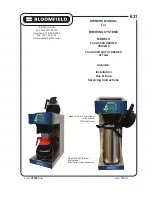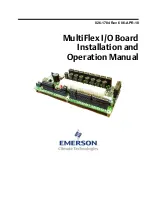
2-6
|
ni.com
Chapter 2
Using the NI PXIe-4357
Temperature Accuracy Considerations
Temperature measurement errors depend on the RTD type, accuracy of the RTD, temperature
being measured, accuracy of the measurement module, and wiring configuration used to connect
the RTD to the module. The NI PXIe-4357 supports 2-, 3-, and 4-wire measurement
connections.
2-Wire Measurement Mode
The NI PXIe-4357 supports a 2-wire measurement mode that allows a simplified 2-wire
connection. However, the simplified 2-wire connection can result in a significant amount of
measurement error and should not be used for high accuracy applications. In the 2-wire
measurement mode the lead resistance adds directly to the measurement and results in an offset
error. For the supported measurement range of the NI PXIe-4357, the lead-wire error in 2-wire
mode generally adds a significant amount of error to the measurement and may require
subtracting the offset in software prior to scaling the resistance measurement to temperature.
Although software can partially compensate for offset error in 2-wire mode, any additional lead
wire resistance change that results due to temperature changes of the lead wires adds to
measurement error. The 2-wire mode offset specifications include 10 m of 22 AWG copper lead
wires.
3-Wire Measurement Mode
The NI PXIe-4357 supports a 3-wire measurement mode that improves the accuracy over that
of the 2-wire mode by effectively canceling out the effects of lead-wire resistance. However, in
order for the compensation to be effective, the resistance of the lead wire connecting the EX+
terminal of the module to the sensor and the resistance of the lead wire connecting the modules
EX– terminal to the sensor must be matched. Although the 3-wire measurement mode provides
a significant reduction of lead wire errors, in practice there will be residual lead errors due to
mismatches in lead wire resistance. The typical lead wire mismatch is about 5%. The 3-wire
mode offset specifications include 10 m of 22 AWG copper lead wire with a mismatch of 5%.
4-Wire Measurement Mode
The best accuracy is obtained using the 4-wire measurement mode. The NI PXIe-4357 4-wire
measurement mode uses a Force-Sense or Kelvin connection to accurately measure the
resistance of a sensor without being affected by the lead-wire resistance. This is accomplished
by providing one pair of leads to provide the excitation current and another pair of leads to
measure the generated voltage directly at the element.
Noise Rejection
External noise sources such as 50 Hz and 60 Hz powerline noise can couple into the sensor
measurement and result in an increase in measurement error. External noise can couple into the
measurement through electrostatic or magnetic coupling, or directly as a common-mode signal.
Using shielded or twisted pair field wiring reduces external noise coupling. The maximum
shielding effectiveness is accomplished using both shielded and twisted pair field wiring. Refer
to Figure 2-2 for information about connecting shields to the NI PXIe-4357. Common-mode














































